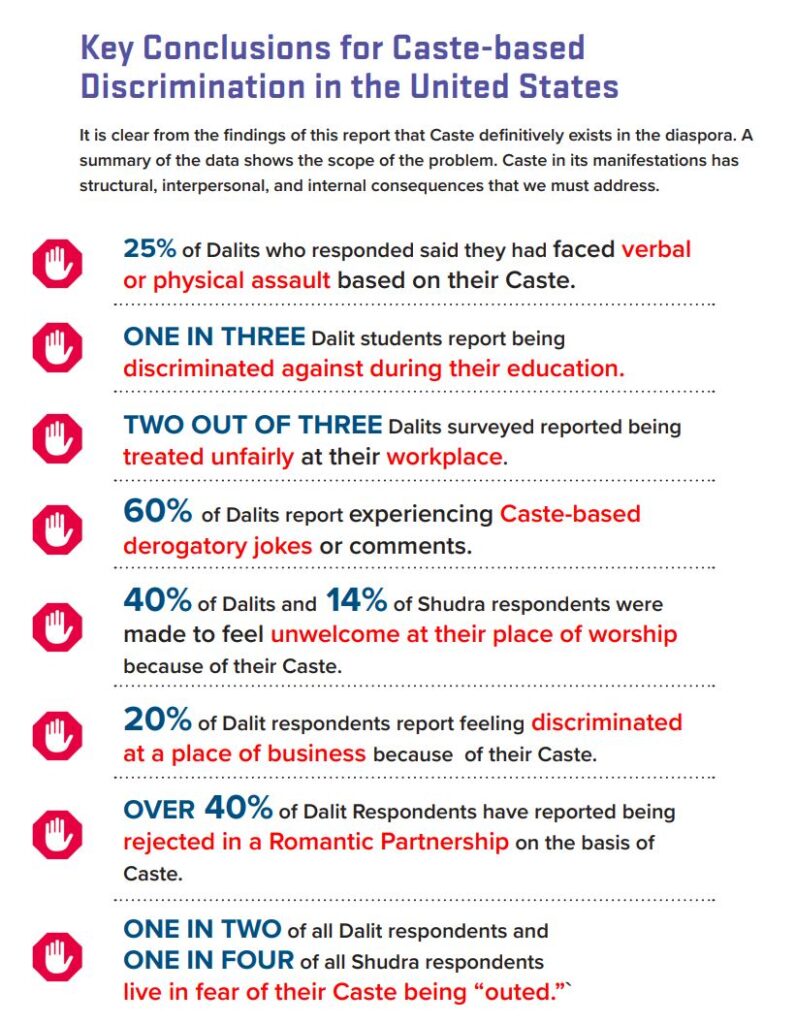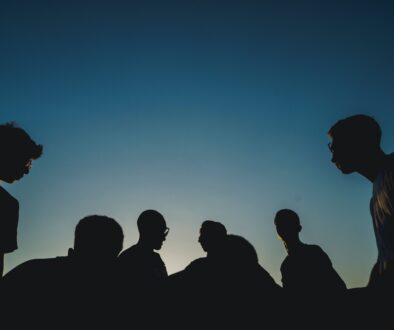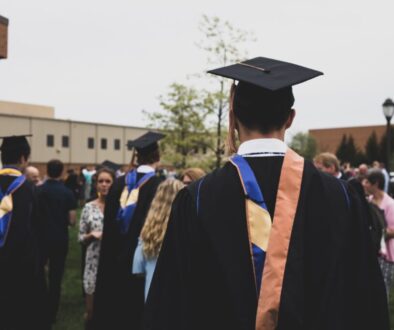Caste in the United States
This week, we are sharing data on an often difficult point of discussion within the South Asian community – caste. There have been several articles that have come out over the years about caste discrimination in the United States. These include discrimination in universities, workplaces, religious institutions, and more.
In 2018, Equality Labs shared a report which identified key points in a survey of 1,500 South Asians to a 47 question survey on Caste. The web-based, self-reported, self-administered questionnaire was directed at those in the diaspora who identified as having subcontinental heritage from Bangladesh, Bhutan, India, Nepal, Pakistan, Sri Lanka, the Maldives, Trinidad/Tobago, Guyana, Fiji, Tanzania, and Kenya. It was open to people of different religions, political, tribal, and caste affiliations.
The survey found that many South Asians who identified as being from the “lower” Castes – especially Dalits, Adivasis, and Shudras tend to “hide their Caste” and tend to worry about being “outed.” The report shares that several respondents expressed significant amounts of psychological turmoil they sustained around the secrecy of their Caste. Being outed meant that they and their families could be rejected from South Asian cultural and religious spaces, lose professional and social networks, and even face bullying, abuse, and violence.
One of the ways this discrimination occurs is in schools. The survey found that 40% of Dalit students reported facing discrimination in educational institutions in the US compared to only 3% of respondents who were from “upper” castes.
Many respondents reported discrimination from their fellow South Asian students. In universities, “lower” Caste students may be asked to move to other living quarters, forbidden from cooking non-vegetarian food, or socially excluded from South Asian student groups and professional networking circles.
People reported facing caste discrimination in the workplace, in local businesses, in places of religious worship. Caste discrimination also may have also influenced whether they rejected a partner or were rejected by one.
Some key findings from the study were:

Their key recommendations for South Asian organizations coming out of the study were to ensure that the organization vision and/or mission statements mentioned Caste explicitly so that every progressive South Asian American community remains committed to the idea that we must fight both white supremacy and Caste apartheid in our journey towards equity for all of our communities.
South Asian American immigrant networks must also work to support Caste, religious, and geographic diversity, especially the communities from Buddhist, Christian, Muslim, Ravidassia, and Sikh backgrounds. They encourage South Asian American organizations to organize cultural events that celebrate this diversity in communities, and not to narrow our experiences to only marking Hindu festivals as our marker of cultural solidarity.
Given this, are there ways that we can do a better job of facilitating conversations around caste amongst our own families? Are there ways that we can make those of “lower” castes feel more comfortable sharing their experiences? Can we choose to be more inclusive and appreciate the diverse experiences of our fellow South Asians? We would love to know what your thoughts are on this topic.



